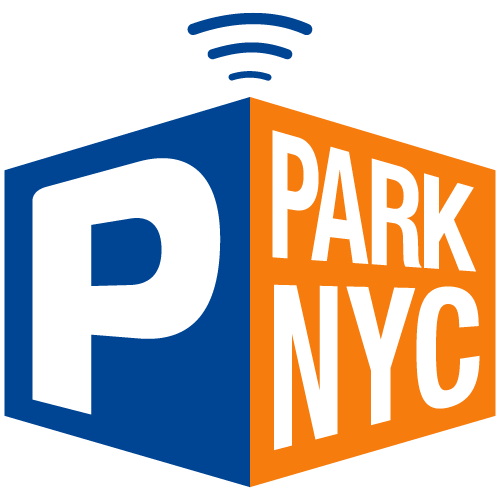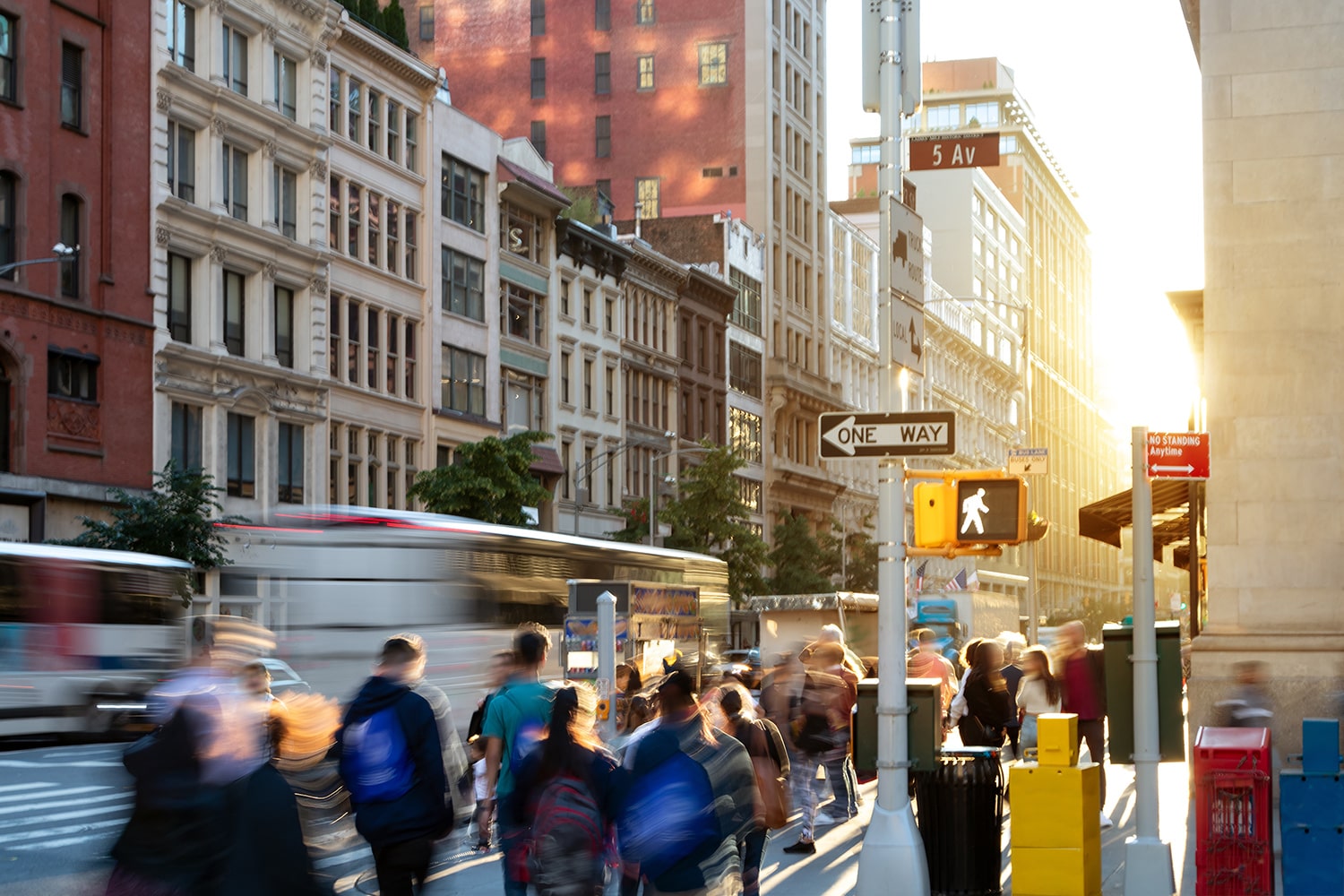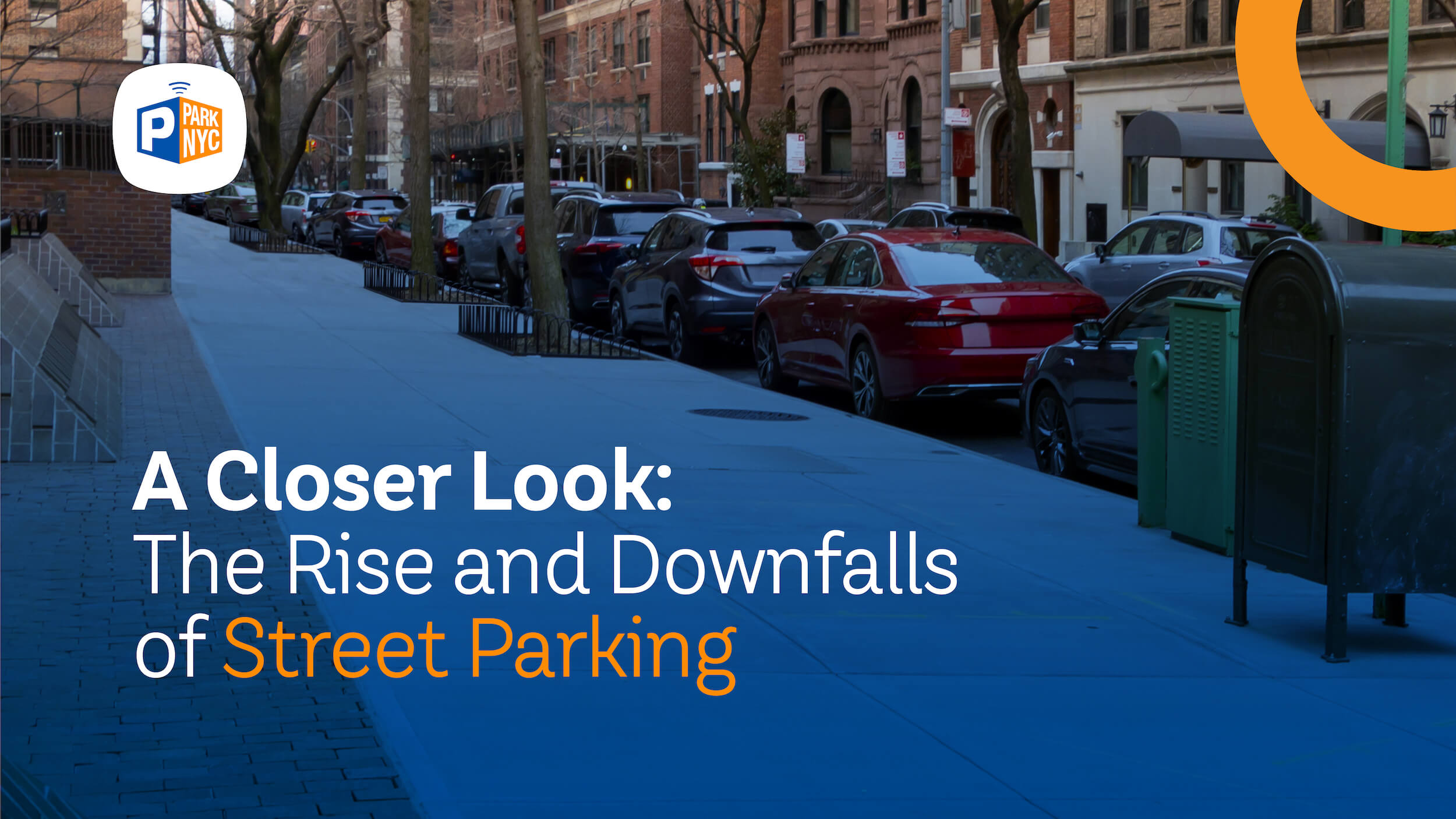
A Closer Look: The Rise and Downfalls of Street Parking
In New York City, street parking (and overnight parking in particular) hasn’t always been as common as it is today – in fact, NYC used to be geared more towards movement and pedestrians. Bans on permanent parking were in effect as early as the 1800s, and today, it is still illegal to park a car in the same spot for more than seven days in a row.
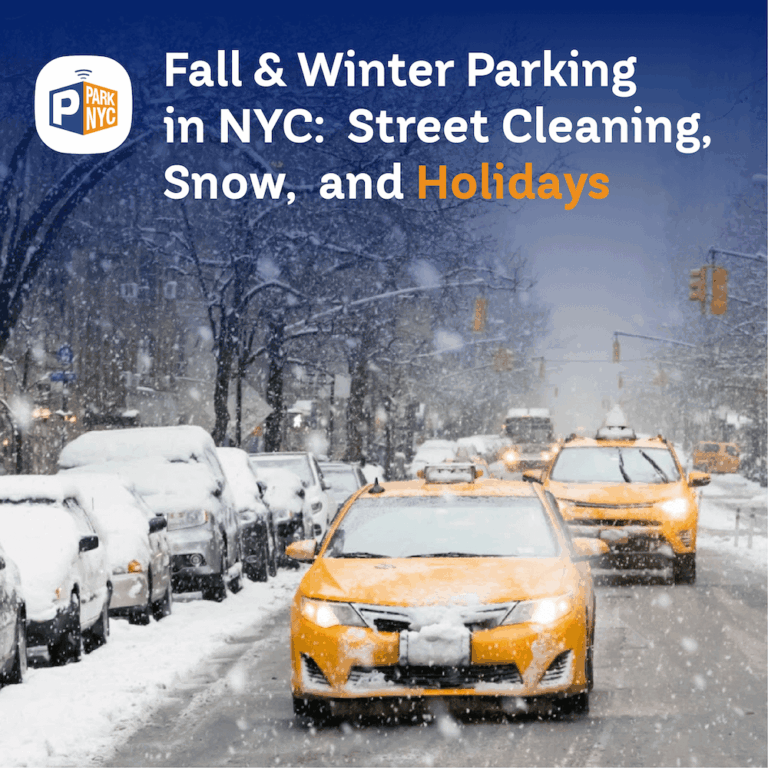
Fall & Winter Parking in NYC: Street Cleaning, Snow, and Holidays
Parking in NYC is always tricky, but the fall and winter months bring on their own unique set of challenges. Frosty, sometimes frozen or completely snow-blocked roads, and heavier holiday traffic can be a total nightmare. While we can’t avoid the snow plows and street cleaners or the holiday rush (from both motorists and pedestrians), we can help you prep so you’re ready to tackle parking in the city like a real New Yorker. 1. Alt Side Parking during the Holidays: Don’t let ASP suspensions trip you up this holiday season, or ever! If you don’t know, ASP helps keep our streets clean by prohibiting parking and allowing street sweepers to clean. According to the NYC DOT, “ASP rules are posted on signs with a “P” crossed by a broom and indicate the days and times parking isn’t allowed. When ASP is in effect, you can’t park on the side of the street that is being cleaned, and the rules apply for the entire time posted on the sign, even if a street sweeper has already passed. ASP rules are suspended on certain legal and religious holidays each year. On Sundays, ASP is not in effect, and you do not
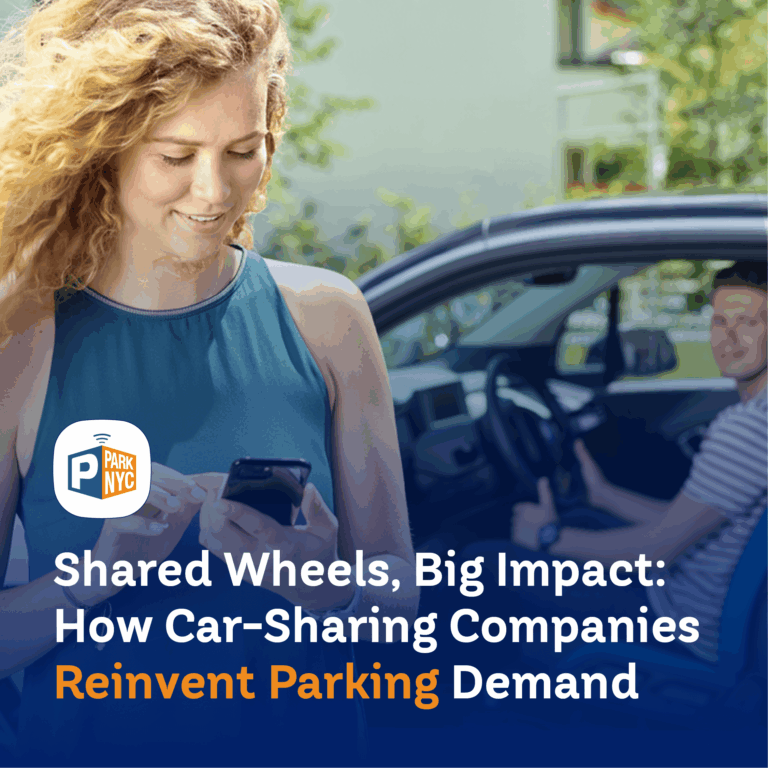
Shared Wheels, Big Impact: How Car-Sharing Companies Reinvent Parking Demand
Owning a car in New York City can be expensive and inconvenient. Car-sharing offers something simpler: reliable access to a car when you need one, without paying to store it on the street the rest of the week. NYC tried dedicating curb spaces to shared cars, studied what happened, then expanded the idea citywide. What New York Tried Starting in 2018, NYC DOT set aside clearly signed “carshare parking only” spaces on neighborhood streets and in municipal lots. The city’s evaluation found the spaces were used steadily by many different households, and that members drove less overall once they joined. Researchers linked the pay-per-use model to those changes, since it nudges people to choose the right mode for each trip and to pair car use with transit, walking, or biking. The same study found a second effect that matters on crowded streets. Each shared car tended to take the place of several private ones, because some New Yorkers sold a car or skipped buying one altogether once they had reliable access nearby. That means fewer long-term curbside parkers and more room to rethink the block. What Happened Next On the strength of the pilot, DOT began installing more curbside sites
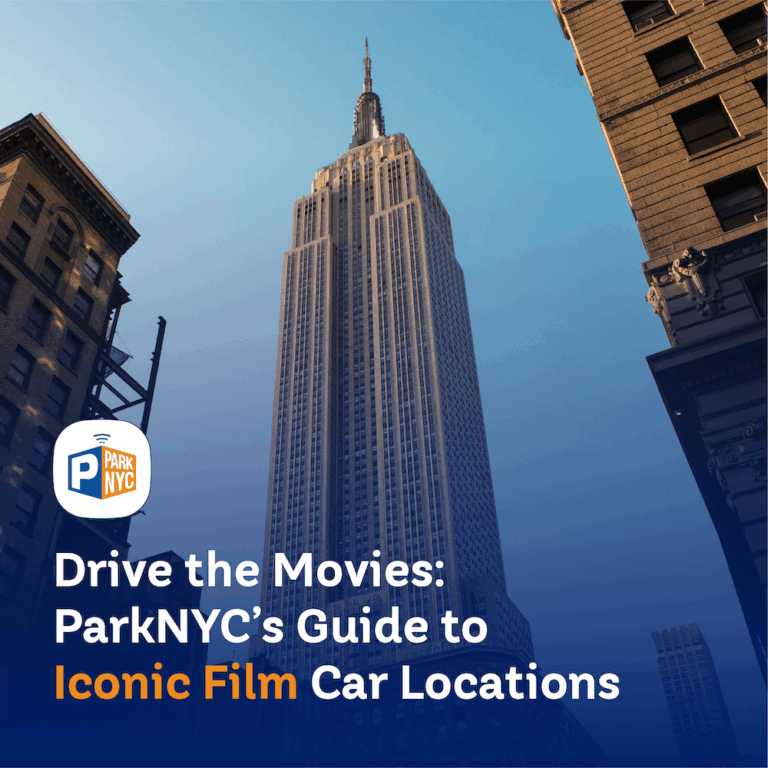
Drive the Movies: ParkNYC’s Guide to Iconic Film Car Locations
Few cities have starred in more movies than New York City. From yellow cabs streaking down Fifth Avenue to muscle cars roaring through the streets of Brooklyn, NYC’s roads have hosted countless iconic car scenes. But here’s the twist: with ParkNYC, you can drive, park, and relive these cinematic car chases and street-side dialogues yourself! In this guide, we are rolling out the red carpet for NYC’s most famous cars and showing you exactly where to park to experience these legendary locations. 1 – Ghostbusters’ Ecto-1 – Hook & Ladder 8 When you hear the siren of the Ecto-1, you know ghostbusting is in session. This converted 1959 Cadillac Miller-Meteor ambulance is almost as famous as the Ghostbusters themselves. The firehouse that doubles as Ghostbusters HQ is Hook & Ladder 8, located in Tribeca. Where to Park: Luckily, Tribeca is well-equipped with metered parking spots, and ParkNYC lets you pay without scrambling for coins. Park on Varick Street or nearby North Moore Street for a quick stroll to the firehouse. Why Visit: Strike a pose in front of the red-brick façade, just like Bill Murray and Dan Aykroyd did. Bonus: The firehouse still has the Ghostbusters sign hanging proudly.
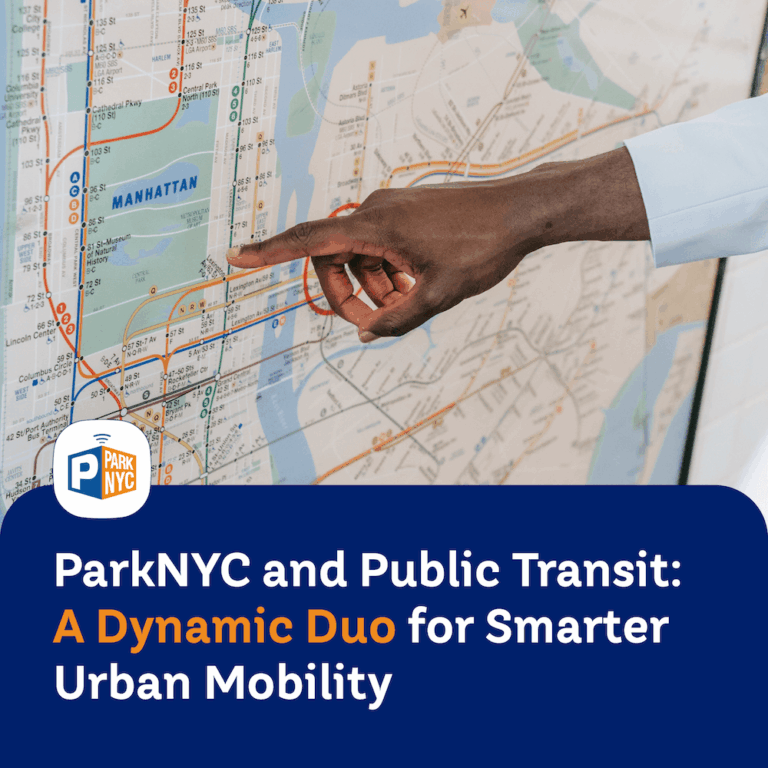
ParkNYC and Public Transit: A Dynamic Duo for Smarter Urban Mobility
New York City’s extensive public transit network and the ParkNYC mobile payment system together present a compelling solution to the city’s persistent traffic congestion and parking challenges. As one of the world’s most densely populated urban centers, New York City faces significant mobility issues, including limited parking availability, high levels of vehicle congestion, and environmental concerns related to emissions. Integrating ParkNYC with the city’s public transportation infrastructure creates a more efficient, convenient, and sustainable way for residents and visitors to navigate the city. This symbiotic relationship encourages multimodal transportation, reduces excessive car dependency, and enhances the overall urban travel experience. ParkNYC also improves the efficiency of parking management by reducing the time drivers spend searching for available spaces. This behavior, known as “cruising,” contributes significantly to urban congestion, according to transportation expert Donald Shoup. Studies show that mobile payment systems for parking can improve urban traffic flow and reduce carbon emissions associated with idling vehicles. A 2021 study by Geng et al. on smart parking solutions found that cities implementing mobile parking applications saw a 21% decrease in the time spent searching for parking. By adopting ParkNYC, New York City aligns itself with global efforts to integrate digital innovations into
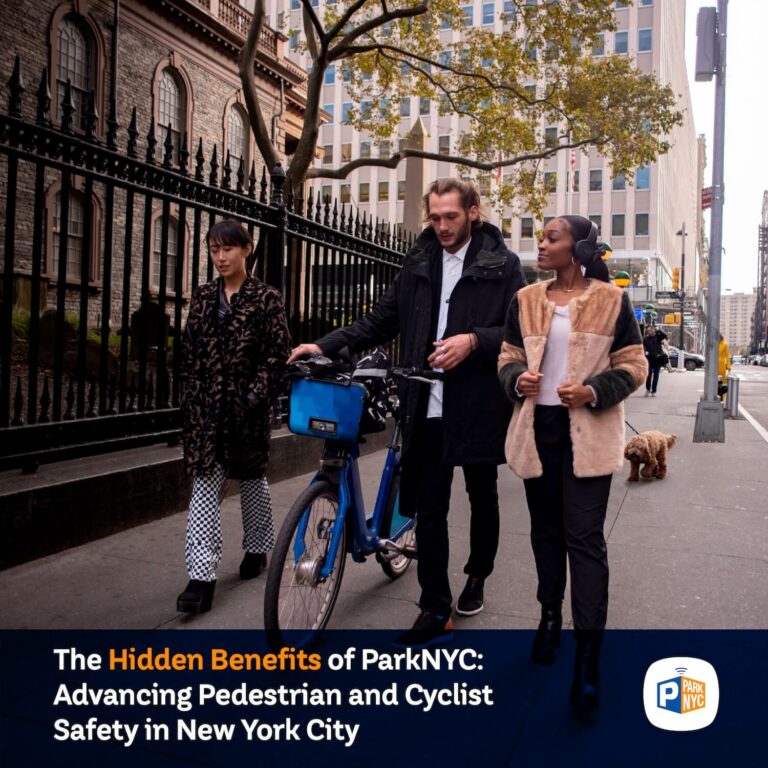
The Hidden Benefits of ParkNYC: Advancing Pedestrian and Cyclist Safety in New York City
Imagine walking along a bustling New York City street, only to see a cyclist swerve abruptly into moving traffic to avoid a double-parked SUV—an all-too-common and dangerous scenario. Poor parking behavior isn’t just an inconvenience; it creates real safety risks for everyone on the street. Solutions like ParkNYC, the city’s mobile parking payment platform, aren’t just about convenience—they offer a powerful, often-overlooked opportunity to digitize curb management, strengthen enforcement, and support Vision Zero’s mission to eliminate traffic-related fatalities. Double-parking remains a pervasive and dangerous issue in New York, particularly in dense commercial corridors. Delivery trucks, ride-share vehicles, and private cars frequently obstruct travel lanes under the pretext of “just a minute” stops. According to a 2022 study by Transportation Alternatives, these violations often force cyclists into active traffic lanes and reduce sightlines for pedestrians, significantly increasing the risk of collisions. Outdated parking meters only exacerbate the problem, encouraging risky behaviors like illegal parking or brief vehicle abandonments. These actions not only clog streets but also contribute to unpredictable traffic patterns that endanger all road users. ParkNYC addresses these issues by offering a streamlined, app-based method for paying for on-street parking. By allowing users to pay for and extend sessions remotely,
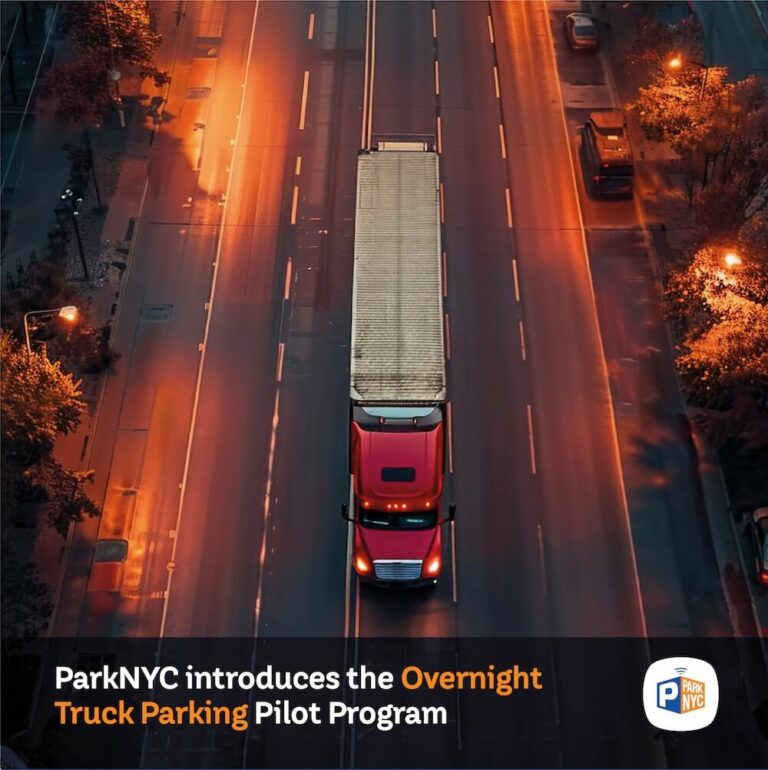
ParkNYC Introduces the Overnight Truck Parking Pilot Program
New York City is introducing a one-year Overnight Truck Parking Pilot Program to provide regulated and convenient parking solutions for truck drivers needing federally mandated rest breaks. This initiative addresses the shortage of legal truck parking spaces and aims to enhance safety, turnover, and compliance within designated corridors. Key Features of the Pilot Program: Dedicated Parking Spaces: Approximately 46 truck parking spaces will be available in key Industrial Business Zones (IBZs) across the city: Bronx: Ryawa Avenue (south side), from Manida St. to Halleck St Brooklyn: Flatlands Avenue (south side), from Erskine St. to Fountain Ave Queens: 56th Road (south side), from 43rd St. to 49th St Pay-by-App Technology: The program will utilize Pay-by-App technology to streamline payment options and ensure compliance, making it easier for drivers to manage their parking sessions. To facilitate seamless parking payments, businesses are encouraged to sign up for a Park NYC Business Account. This account allows companies to manage all employee parking transactions through a single Park NYC wallet, simplifying the payment process for fleet operations. Businesses can add an unlimited number of vehicles to their fleet and manage parking sessions efficiently. How to Get Started with a Park NYC Business Account: Sign Up:
